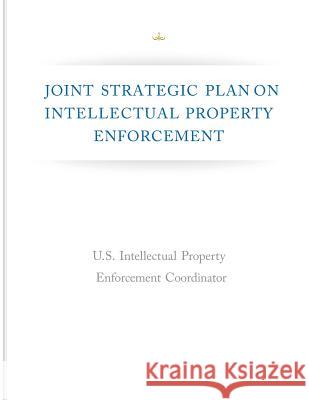Joint Strategic Plan on Intellectual Property Enforcement » książka
Joint Strategic Plan on Intellectual Property Enforcement
ISBN-13: 9781500422769 / Angielski / Miękka / 2014 / 92 str.
As President Obama has made clear, "our single greatest asset is the innovation and the ingenuity and creativity of the American people. It is essential to our prosperity and it will only become more so in this century." So it matters that we have the right approach to intellectual property enforcement; one that is forceful yet thoughtful, dedicated and effective, and that makes good and efficient use of our resources. Ours is a Nation of entrepreneurs, inventors, innovators, and artists. The ideas that American citizens generate catalyze cutting edge research, ensure longer and healthier lives, and power the globe's most productive economy. Our ingenuity and entrepreneurial spirit make the United States great, and we must fiercely defend that competitive advantage. As President Obama has said, "if the playing field is level, I promise you-America will always win." In June 2010, we issued the Administration's first Joint Strategic Plan for Intellectual Property Enforcement. Since then, we have made great progress: law enforcement operations have increased in scope and efficiency, and investigations, seizures, arrests, and convictions have increased significantly; several industry-led voluntary initiatives to reduce infringement online have been concluded and are in force; there is more efficiency and coordination among Federal agencies; the Federal government is now more aware of and active in eliminating counterfeits in its supply chain; and gains have been made in coordination and cooperation with our trading partners. We have worked cooperatively with Congress, and as a result of these efforts, seven Administration legislative recommendations to improve our enforcement system have become law. Nonetheless, we know that infringement of intellectual property continues to pose significant risk to our economy and to our ability to compete globally. So we must continue to look forward, building on what has already been accomplished. On June 25, 2012, we asked the public for input in developing the Administration's second strategy. Incorporating this input, we worked with agencies from across the U.S. Government, including the Departments of Agriculture, Commerce (DOC), Defense (DOD), Health and Human Services (HHS), Homeland Security (DHS), Justice (DOJ), Labor (DOL), State (DOS), Treasury, and the Office of the United States Trade Representative (USTR) and other offices within the Executive Office of the President (EOP), as well as the U.S. Copyright Office to develop the strategy. In this resultant Joint Strategic Plan, we seek to build upon ongoing work with an eye to increasing U.S. Government coordination and efficiency and to anticipating the challenges of the future. As with the original Joint Strategic Plan, we have set out a number of commitments by the Administration that we will undertake in order to improve enforcement. Our primary concerns remain the same: creation of American jobs, promotion of the global competitiveness of American businesses and enterprises, protection of public health and safety, and preservation of the Constitutional rights of American citizens. There are a number of issues that we anticipate will continue to be a focus of discussion. One of those issues is troubling patent litigation tactics that present a significant and growing challenge to innovation. President Obama recently identified this as an area to be addressed and on June 4, 2013, following a review by the White House Task Force on High-Tech Patent Issues, the Administration issued five executive actions and seven legislative recommendations designed to curb abusive patent litigation and to ensure the highest-quality patents in our system. We believe it is in the country's best interest for companies involved in patent disputes to resolve them amicably so that they can get back to doing what they do best-creating innovative and useful products that spur the economy.
Zawartość książki może nie spełniać oczekiwań – reklamacje nie obejmują treści, która mogła nie być redakcyjnie ani merytorycznie opracowana.











